
In the contemporary Internet of Things (IoT) networking scenario, as the scale of sensor networks continues to expand and the number of connected devices keeps growing, issues such as channel congestion, interference, and signal distortion have become increasingly prominent. Additionally, there are often multiple communication rate requirements within the same scenario, making it increasingly difficult for traditional communication technologies to support the large-scale networking demands of IoT. Therefore, considering factors such as construction costs, operational power consumption, transmission distance, and network capacity, LPWAN (Low Power Wide Area Network) technology has emerged.
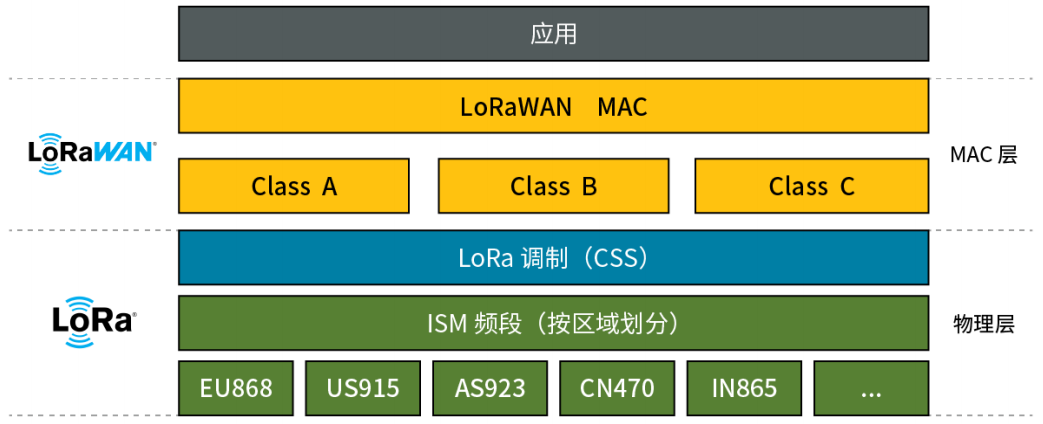
LoRaWAN Communication Protocol Stack
Among them, LoRaWAN, as a typical representative of LPWAN technology, employs Chirp Spread Spectrum (CSS) technology at the physical layer for reliable low-power wireless communication, demonstrating significant application potential in various IoT scenarios. It is one of the effective solutions to address the current challenges of large-scale IoT networking communication.
01
LoRaWAN Protocol
The “Dark Horse” of IoT Wireless Communication
The CSS technology used by LoRaWAN works by spreading the data signal in the frequency domain, which can be simply understood as dividing a data signal into multiple parts (signal spreading) and then transmitting them across different frequencies.
CSS technology not only effectively enhances the signal’s resistance to interference but also allows the receiving end to reconstruct the complete data signal even if some parts of the signal are interfered with during transmission, enabling stable communication in low signal-to-noise ratio environments.

Spreading Factor Simplified Diagram
The data signals transmitted by LoRaWAN are primarily carried in different chirp signals, where chirp signals refer to wireless signals with linearly increasing/decreasing frequencies. Different spreading factors (SF6~SF12) represent the number of bits that can be transmitted in different chirp signals.
As shown in the figure above, under the same conditions of bandwidth, frequency, transmission power, coding rate, and data volume, a larger spreading factor results in a longer transmission time for the data, thus lowering the data transmission rate. However, a larger spreading factor also means more reliable data transmission, longer transmission distances, and lower signal-to-noise ratio requirements for data transmission.
At the same bandwidth, the data rate for SF6 is the highest, while the data rate for SF12 is the lowest.
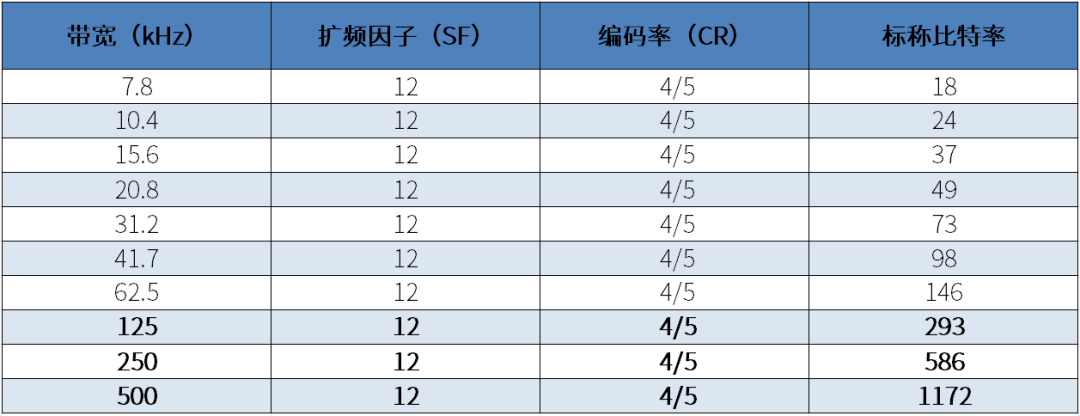
LoRaWAN can also modulate channel bandwidth. Generally, increasing the bandwidth can enhance the data transmission rate but sacrifices some receiving sensitivity.
Currently, LoRaWAN can be adjusted to a minimum of 7.8kHz, and below 62.5kHz, a TCXO must be used to ensure accuracy. In mainland China, common channel bandwidths for LoRaWAN are 125KHz, 250KHz, and 500KHz.
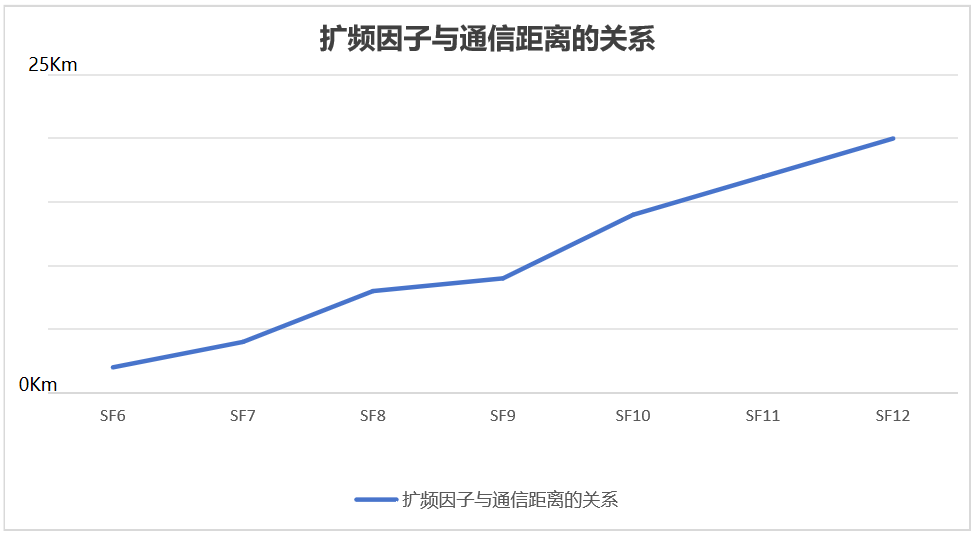
Other Communication Parameters Corresponding to Spreading Factor 12
It is worth mentioning that since LoRa signals can be transmitted across different spreading factors (SF6~SF12), and different spreading factors can use the same channel (the different spreading sequences are orthogonal, allowing frequency reuse), the LoRaWAN protocol can flexibly adapt to the IoT networking needs of different rates and transmission distances.
From a cost perspective, due to the widespread application of LoRa technology, the prices of LoRaWAN terminal devices and gateways have become quite affordable.
Additionally, since LoRa technology operates in free unlicensed frequency bands (ISM bands: 433MHz, 868MHz, 915MHz, and 2.4GHz), and only requires a small number of gateways for large-scale deployment, the network construction costs are relatively low.
Regarding maintenance, LoRa modules feature deep sleep and wake-up functions, allowing them to enter sleep mode when not communicating, resulting in lower battery replacement frequency and relatively low maintenance costs.
02
LoRaWAN Protocol: Precisely Empowering the IoT
With significant advantages such as long-distance communication, low power consumption, low cost, and strong resistance to interference, LoRa technology has been widely applied in industrial automation, smart cities, smart agriculture, and smart logistics, providing robust support for the digital and intelligent development of various industries.
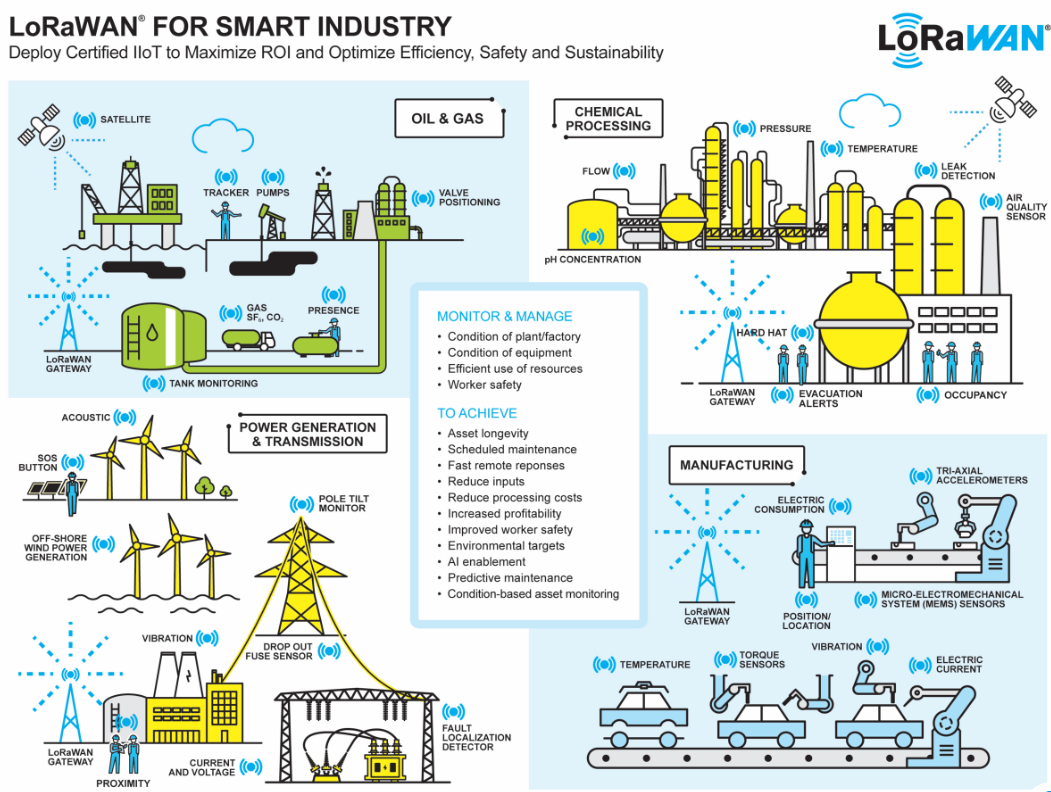
Advantages of LoRaWAN Protocol in the Industrial Field
Image Source: LoRa Alliance Official Website
The network architecture of LoRaWAN adopts a star topology, where gateways relay messages between terminal devices and central network servers. Gateways communicate via standard IP connections, and their core function is to perform bidirectional conversion between RF data packets and IP data packets.
Thanks to the long-distance transmission characteristics of the LoRa physical layer, communication between terminal devices and gateways can be achieved with a single-hop link.
This system supports bidirectional data transmission and features multicast addressing, enabling efficient spectrum utilization in operations such as firmware over-the-air upgrades (FOTA).
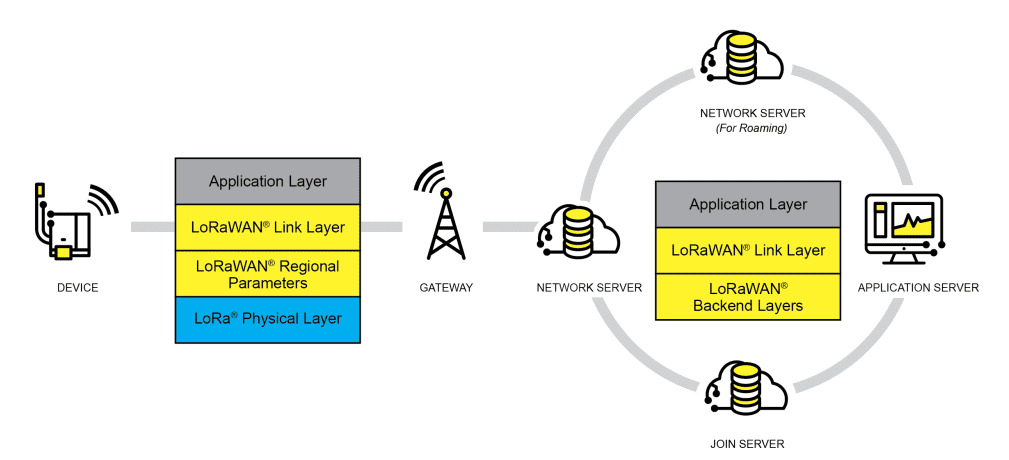
Simplified Diagram of LoRaWAN Network Architecture
Image Source: LoRa Alliance Official Website
Moreover, the LoRaWAN protocol defines three operating modes for LoRaWAN terminal devices: Class A, Class B, and Class C, which cover nearly all IoT application scenarios.
Class A mode allows for bidirectional asynchronous communication, opening two short downlink windows to receive responses after uplink transmission, with the lowest power consumption. Class B mode primarily synchronizes time through beacons, additionally opening predefined receive windows to balance communication delay and power consumption.
Class C mode continuously listens to the downlink, offering the lowest latency but the highest power consumption, suitable for emergency control scenarios.
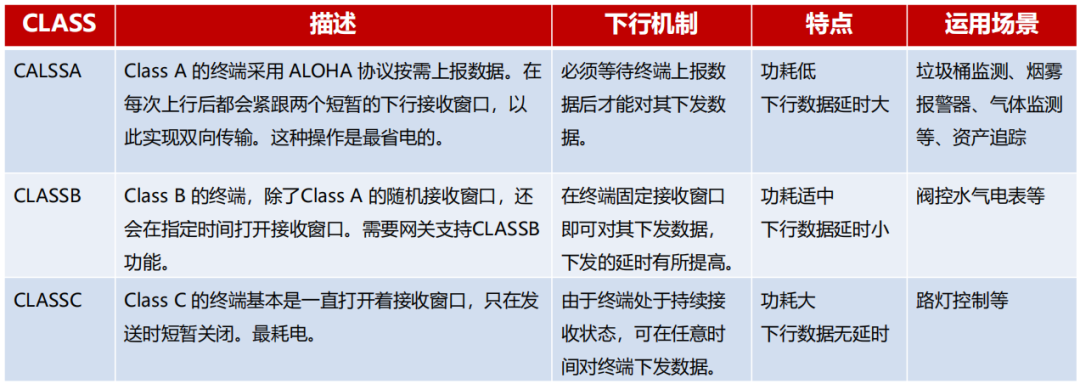
Three Operating Modes of LoRaWAN Terminal Devices
For example, the RFM6601 is a low-power LoRa module used to build LoRa networks. It employs advanced mixed-signal design and is based on a unique adaptive rate algorithm, efficiently connecting to the IoT and extending the lifespan of LoRaWAN devices, and has received FCC certification.
The RFM6601 features low power consumption, high sensitivity, long-distance communication, and high cost-performance ratio, while also providing rich peripheral functions, including multiple general-purpose GPIOs, a 32.768 KHz external crystal oscillator, channel listening, high-precision RSSI, and 12-bit high-speed ADC and DAC.
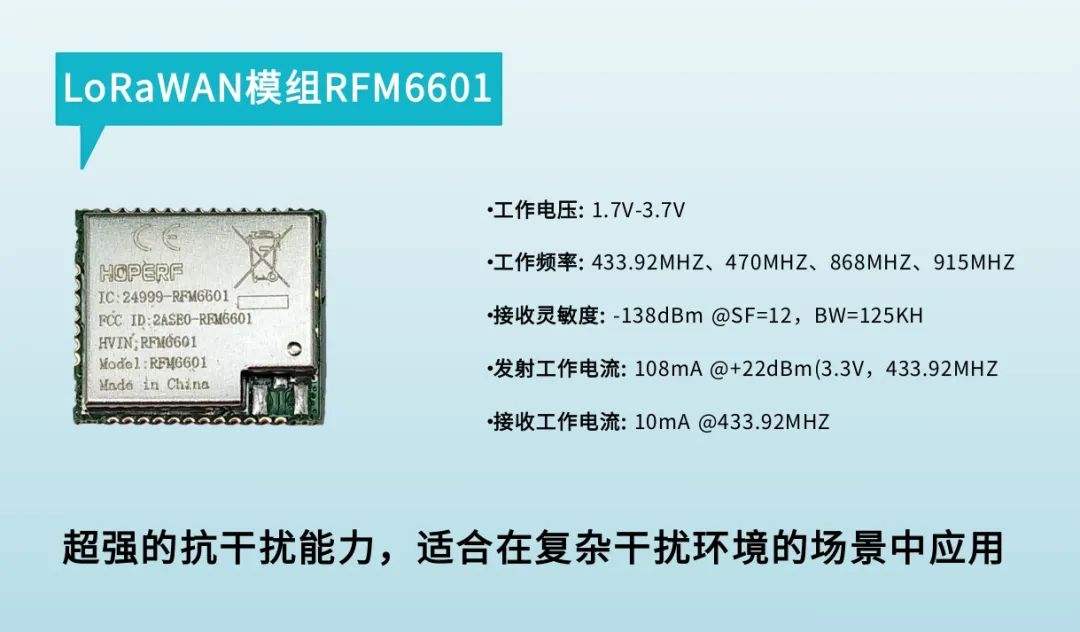
Looking ahead, as IoT technology continues to advance, LoRa technology will also be continuously improved and innovated, with performance indicators such as data communication rates and network capacity expected to be further enhanced to meet the growing demands of IoT applications. We believe that LoRa technology will continue to drive innovation and development in industrial systems, providing users with a more intelligent, convenient, and comfortable experience.
1
END
1

About Hoperf
Shenzhen Hoperf Microelectronics Co., Ltd. (hereinafter referred to as Hoperf) was established in 2004 and is a national high-tech enterprise focused on independent innovation and product development of core IoT components.
Over the past 20 years, Hoperf has based its development on Sub-GHz wireless communication RF chips and module products, expanding to develop high-precision MEMS sensors and digital isolator products, forming a product layout that integrates key aspects of information perception and interaction. After years of accumulation, Hoperf has developed into a system-level service provider for IoT wireless communication, encompassing RF chip design, firmware and protocol design, application development, and testing.
As one of the well-established IoT wireless RF chip brands in China, the company has accumulated a wealth of high-quality customer resources and brand recognition both domestically and internationally, thanks to its solid R&D capabilities, reliable product quality, cost-performance advantages, and system-level service capabilities.
If you have any needs, please contact us immediately!
Phone: 400-1189-180
Email: [email protected]
Website: https://hoperf.cn/
For more information, please follow 【Hoperf】
↓↓↓↓
